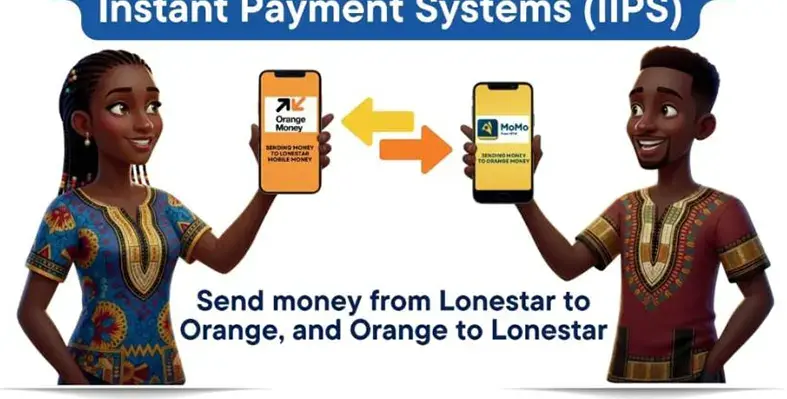UK-based Informa Telecoms and Media suggests that those companies that ‘most clearly and effectively differentiate their services and build their brand’, will win out by retaining existing customers at a time when an increasing number of consumers are reviewing their spending plans.
As one example, many operators seem oblivious to the potential to add mature and elderly customers, cohorts which are turned off by marketing pizzazz and who find current phones too small and fiddly for their fading vision and manual dexterity. Many of these potential customers only want local and long distance voice. Populations are aging in most developed countries and some emerging markets, but often seem to have been missed by marketeers.
A principal analyst at Informa, Nicholas Jotischky, believes that emerging markets remain the focus of growth opportunities. India, for example, added 102mn new subscribers in 2008, eclipsing even China, despite falling global subscriber growth.
“Untainted by saturation, there are still considerable margins for growth in some of the world’s most populous markets such as India, Indonesia and Nigeria.
“The potential doesn’t just revolve around new customers, but also lies in serving those most recently connected with greater content offerings and value added applications.”
In the Middle East, for example, revenues from mobile data services in the third quarter of 2008 reached $1bn, highlighting the potential for the uptake of mobile broadband services. Jotischky pinpoints the single most notable feature in the region as the ongoing expansionist activity of some of the Gulf’s largest operators.
A healthy climate
“We expect to see a healthy mergers and acquisitions climate in 2009 in Africa and Asia as Zain and Etisalat clearly see the current global macroeconomic climate as an opportunity to acquire new assets in high-growth markets,” Jotischky said. Earlier this year, Etisalat won Iran’s third national 2G and 3G mobile licence, while Zain and Orascom picked up network management contracts in Lebanon.
While there’s less room for optimism in Europe and North America, opportunities will present themselves there too. Informa believes that in markets such as Germany and the US, there is still a mood for service innovation, with value added services to either help make the life of users easier (mobile payment) or more entertaining (music/mobile TV).
In its latest report, ‘Global Mobile Outlook for 2009’, however, Informa does acknowledge the considerable challenges ahead for the industry, especially for the vendor community. Canada’s Nortel, for example, once a global flagship, has fallen to the bankruptcy trustee’s axe.
“The lifeblood of the supplier community is operator capital expenditure, and if we start to see a prolonged trend for cuts in investment plans for 2009 and beyond, this will spell trouble.”
The report adds that the handset market will also need to watch very closely the impact of consumer spending cuts and the decreased availability of credit, especially towards the higher-end of the consumer and corporate markets. Jotischky notes that, “A useful barometer for the industry as a whole will be spending on mobile data services. The moment data revenues stagnate is the time to worry, (though) we have not yet reached this stage.”
Senior Informa analyst Dario Talmesio also says that mobile operators have not been substantially affected by the deterioration of the economic environment. They have shown impressive resilience and “contingency plans are being prepared for the year ahead with many operators preparing to lower cost bases and downsize their business”.
Meanwhile, France Telecom – not to be deterred by hard times - has taken control of Senegal’s leading operator, Sonatel, by acquiring another 10 per cent stake in the operator from Senegal’s government.
In April, Senegal and the French carrier both announced an agreement that will see France Telecom acquire a further 10 per cent of Sonatel, taking FT’s holding to just over 52 per cent. The deal will cost France Telecom 209m euros, or 294 euros per subscriber Sonatel has almost four million customers in Senegal and about 3.5m in nearby countries.
The Senegalese government will remain the second largest shareholder with just over 17 per cent of the company.
Focus on growth
Informa’s European telecom analyst, Michael Kovacocy, noted that the price seemed reasonable “given growth prospects in the region.”
Kovacocy also views “very favourably the emphasis on buying growth in Africa, which we believe allows France Telecom to buy solid long-term growth prospects with less risk currently of overpaying.”
France Telecom also increased its holding in Egyptian operator, Mobinil, in April after settling a legal dispute with Orascom and paying 530m euros for Orascom’s share of Mobinil. The French operator failed to take control of Mobinil, however, since Egypt’s Capital Market Authority rejected FT’s bid to buy out minority shareholders.
East Africa also has potential to move ahead this year. The region has no global connectivity via submarine cables and pays high bandwidth prices for satellite services. Kenyan Internet service provider Flashcom, for example, pays about US$2400/Mbit/s of bandwidth said CEO Joe Kimani at Informa’s East Africa Com conference in Nairobi in early April. That compares with about US$10 for the same bandwidth in emerging markets served by cable. However, several undersea cables are slated to come ashore soon. They include GLO-1, EASSy, MainOne, TEAMS and WACS. That would allow ISP’s to up their bandwidth.
Fixed-line incumbent Telkom Kenya, now controlled by France Telecom, will also benefit; particularly from the TEAMS cable.
The TEAMS and SEACOM cables are due to land in East Africa later this year and the EASSy cable will follow in 2010.
Telkom Kenya’s strategy is based on convergence, and it aims to be “the first and only integrated telecoms operator in the Kenyan market”, said Deputy CEO Peter Reinartz at East Africa Com.
Telkom Kenya’s full converged offering will be in place in 2010, said Reinartz. The availability of more bandwidth will propel convergence underpinning the introduction of new data services such as IP-VPN for the business market in 2009. Telkom Kenya will also wholesale international bandwidth to operators throughout East Africa. Terrestrial cabling is also needed to link the interior, including landlocked countries such as Uganda, Rwanda and Burundi. In Kenya, itself, second ranking operator Zain has relaunched with a new brand and managing director, to compete aggressively on price against brand leader, Safaricom.
There is already plenty of drama in the Kenyan market. Second ranking mobile operator Zain has relaunched with a new brand and managing directorand is competing aggressively on price with market-leader Safaricom. Furthermore, Telkom Kenya launched its Orange Kenya mobile network last September and Econet Wireless Kenya launched the country’s fourth GSM network, yu, in November.
Safaricom still dominates the Kenyan mobile market with 13.13 million subscriptions and a market-share of about 77.5 per cent at end-2008, according to research by Informa Telecoms & Media. Safaricom’s M-Pesa money-transfer service has become an integral part of the lives of many Kenyans, which makes it a valuable customer retention tool for the company. Meanwhile, industry analyst Ovum also finds reasons for optimism, based on performance in emerging markets and in the mobile data segment. Recent figures released by Ovum project more than 5.6bn global cellular users by 2013, more than one for every household on earth. It adds that prepaid connections are expected to account for about 73 per cent of the global installed base by that time; up from 70 per cent in 2008.
However, a significant number of connections in 2013 will result from subscribers owning multiple subscriber identity modules (SIMs), for connections to more than one network. African users commonly have SIM cards for two or more networks.
Ovum notes that emerging markets are key to this continued growth. It says that the China-India-Bangladesh-Pakistan region will be the main driver of emerging market growth, with a compound annual growth rate (CAGR)of 12 per cent through to 2013.
Steven Hartley, senior analyst at Ovum, notes that this trend will result in a shift in global operator power toward emerging market players such as Orascom and Zain.
Total world revenues for operator services are expected to rise to US$ 1.1tn that’s trillion!) by 2013, Ovum says; with voice contributing 73 per cent. This underlines the oft-repeated maxim that voice continues to be the killer application for basic cellphone users.
Ovum also agrees that data came into its own in 2008. Data revenues, including those from messaging, are forecast by Ovum to grow 79 per cent globally, by 2013.
Carl Edgar Law






















